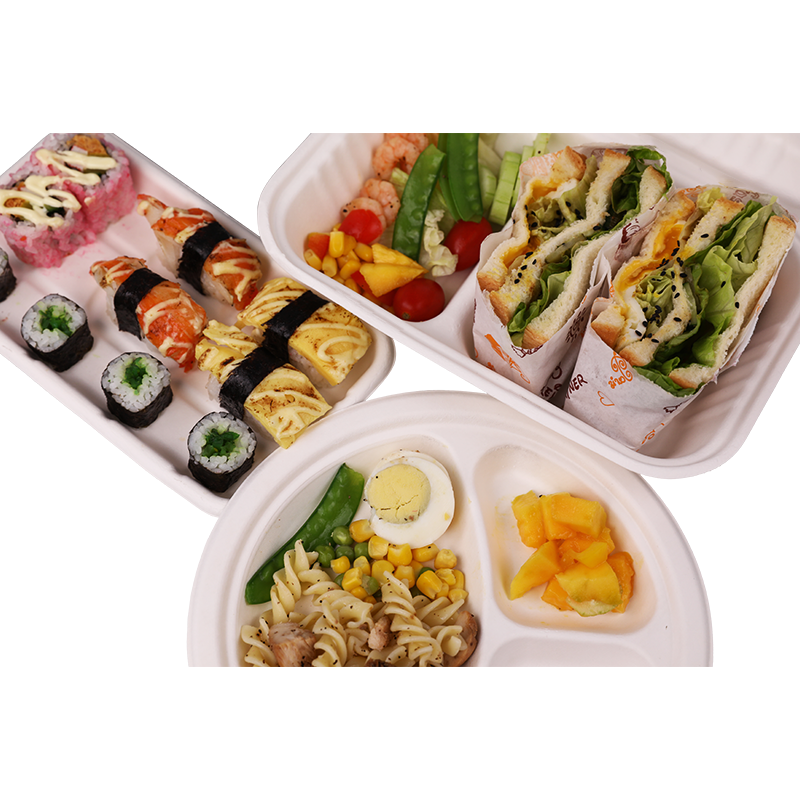Sugarcane bagasse cutlery is crafted from Bagasse, a natural byproduct left behind after sugarcane stalks are processed to extract juice. Instead of being discarded as waste, Bagasse is repurposed to create eco-friendly utensils, such as forks, knives, spoons, and even stirrers. Bagasse is an ideal material for this purpose because it is biodegradable, compostable, and readily renewable.
2. The Environmental Advantages
Sugarcane bagasse cutlery offers several compelling environmental benefits:
Biodegradability: Bagasse utensils decompose naturally, returning to organic matter without leaving behind harmful residues or pollutants. In contrast, traditional plastic utensils can persist in landfills and oceans for centuries.
Reduced Carbon Footprint: Bagasse is a renewable and sustainable resource, as sugarcane crops can be replanted annually. The manufacturing process for Bagasse utensils is also energy-efficient, contributing to a lower carbon footprint compared to plastic production.
Resource Conservation: By using Bagasse as a raw material, the demand for timber and other finite resources typically used in plastic utensil production is reduced.
Supports Agriculture: The cultivation of sugarcane, which provides Bagasse, supports agricultural economies in various regions.
3. Versatile Applications of Sugarcane Bagasse Cutlery
Sugarcane bagasse cutlery is incredibly versatile and suitable for a wide range of dining applications:
Restaurants and Cafes: These utensils are ideal for dine-in and takeout services, allowing establishments to provide a sustainable dining experience for their customers.
Catering Services: Many catering companies choose sugarcane bagasse cutlery to provide eco-friendly utensils at events, parties, and weddings.
Food Trucks: Mobile food vendors looking to reduce their environmental impact often opt for these utensils to serve their customers.
Schools and Institutions: Educational institutions seeking sustainable dining options for students and staff can benefit from sugarcane bagasse cutlery for their cafeteria services.
4. Durability and Functionality
Sugarcane bagasse cutlery not only contributes to sustainability but also offers durability and functionality:
Sturdy and Heat-Resistant: These utensils are robust and can withstand the heat of hot foods and liquids. They maintain their structural integrity during use.
Safe for Microwaves: Sugarcane bagasse cutlery can be safely used in microwaves for reheating without leaching harmful chemicals.
Convenient and Hygienic: The cutlery is disposable, eliminating the need for washing and sanitizing, making them a convenient option for various dining settings.
5. Challenges and Considerations
While sugarcane bagasse cutlery offers numerous benefits, it's important to consider some challenges:
Composting Infrastructure: To decompose properly, sugarcane bagasse cutlery requires access to specific composting facilities or home composting systems, which may not be available in all areas.
Consumer Education: Raising awareness and educating consumers on the proper disposal of these utensils is essential to ensure they end up in composting facilities rather than landfills.
Cost: Sugarcane bagasse cutlery can be slightly more expensive than traditional plastic utensils, which may influence purchasing decisions for some consumers or businesses.

 Email: Maggie.ding@hl-jdb.com
Email: Maggie.ding@hl-jdb.com  Tel: +86-576-88175158;+86-576-88175158
Tel: +86-576-88175158;+86-576-88175158 
 中文简体
中文简体

.png)



.png)
.png)
.png)
.png)
.png)
.png)
.png)
.png)
